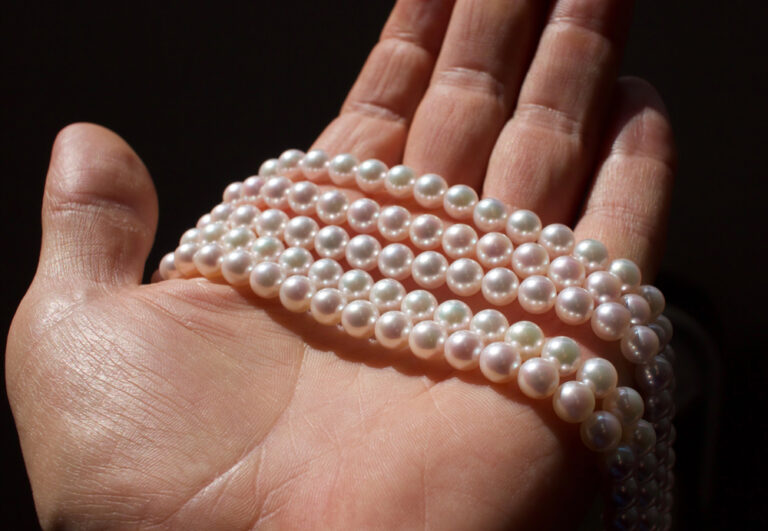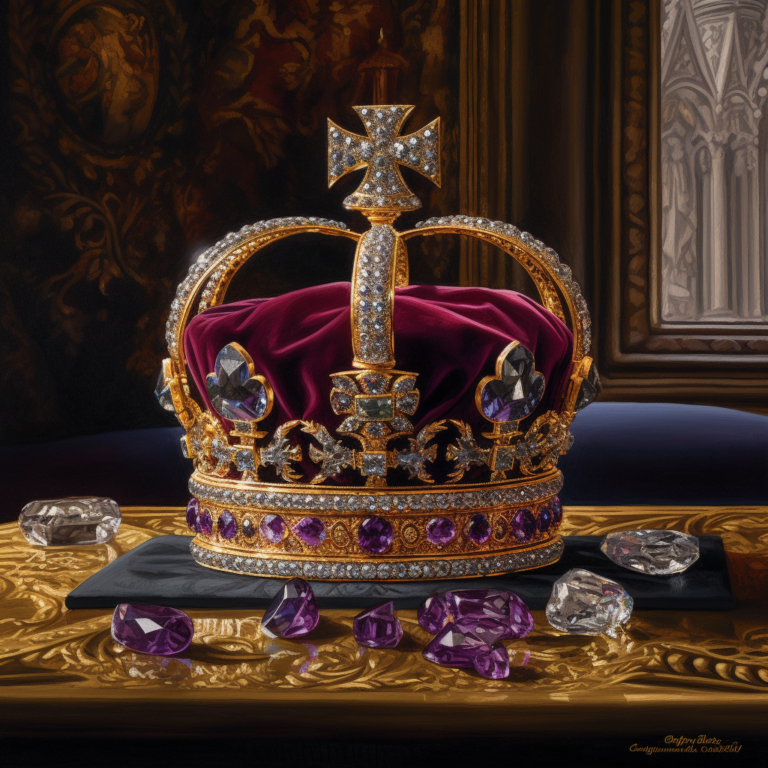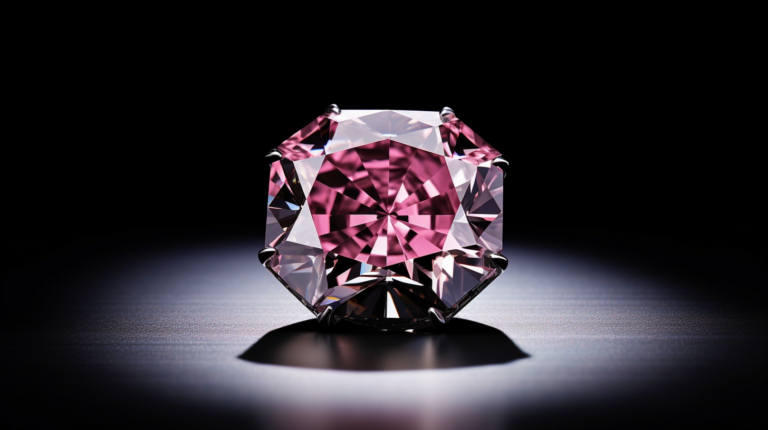Aventurine Stone: Properties, Benefits & Meanings

Aventurine Stone Overview
Aventurine is a variety of quartz found in a few different colors. It’s known for its beautiful, glittering appearance and unique energy, which is said to help motivate you and bring luck into your life.
This article will tell you all about the Aventurine stone, its properties, meaning, and uses.
What is The Aventurine Stone?
Aventurine is a variety of quartz that is often green because it’s made up of silicon dioxide and aluminum oxide, which give the stone its beautiful green color. However, Aventurine can also be found in other colors, including red, brown, and blue-green. The word “aventurine” comes from Italian or French words meaning “by chance” or “accident.”
This is because the stone’s green color is said to be a result of chance, as impurities cause it within the quartz. These impurities can give the Aventurine a shimmering appearance that resembles the ocean. The name “aventurine” also refers to a type of glass with many tiny bubbles inside, which gives it an iridescent quality when light passes through it.
What does Aventurine mean?
Aventurine comes from “Avventura,” an Italian word meaning “by chance.” The name “Aventurine” was given to this stone because it was first discovered by miners digging through quartz deposits. They found pieces of shiny, green material that looked like emeralds—but without any real value. So they tossed them aside as worthless. Later, when people realized that those green stones were a type of quartz called “aventurine,” people started collecting them!
Its name is inspired by its delightful shimmering quality. Adventurine is said to be named after the French word aventurescence, which describes the visual charm imparted by small particles of highly reflective mineral contained within a more prominent and less reflective structure.
How to say Aventurine?
The word “aventurine” is pronounced as if it were spelled “aeventurine.” The “ae” sound is like the word “air,” but without the R at the end.
What’s another name for Aventurine Stone?
Aventurine is also known as “aventurine quartz,” “green quartz,” and “Ventura stone.” It’s also sometimes called “sunstone” because it has an iridescent quality when light passes through it.
What’s the history of the Aventurine Stone?
According to legend, the Tibetans would decorate their statues with a stone called Aventurine—which shines in the sunlight and represents wisdom. Until the 19th century, Aventurine was known as “the stone of the Amazons” because it came from Brazilian deposits and was thought to have supplied jewels for Amazon warrior queens.
How is Aventurine Formed?
Aventurine forms when other minerals deposit themselves onto existing crystals—usually quartz or feldspar. For this process to happen, there needs to be intense heat or pressure involved in creating these new patterns; otherwise, if there isn’t enough pressure or heat, the crystals would melt into a liquid, and no new designs are made.
Aventurine is typically found in metamorphic rocks like schist or gneiss—these types of rocks form when existing igneous rock (like granite) is buried deep within the earth’s crust.
Natural vs. Artificial Aventurine
The Aventurine stone is usually available in two forms: natural and synthetic. The most common form of Aventurine is the wild variety, made from quartz exposed to heat and pressure inside a volcano. When this happens, iron or copper gets trapped within the stone and causes it to have a greenish hue.
Types of Aventurine Stone
Green Aventurine can be identified by the platy inclusions of green fuchsite mica. The other variation is Aventurine feldspar, which contains various amounts of this mineral.
Where can you find Aventurine?
Aventurine can be found in many countries worldwide, including:


What are the Physical Properties of Aventurine?
| Mineral Group | Quartz |
| Formula | SiO2 |
| Chemical name | Silicon dioxide |
| Color | Green, Red-Brown, Gold-Brown |
| Hardness (Mohs scale) | 6.5 – 7 |
| Tenacity | Brittle |
| Fracture | Conchoidal, Splintery |
| Transparency | Translucent, Opaque |
What does Aventurine look like?
Aventurine is a translucent to opaque quartz stone that is usually green or brown but can also be found in blue, red, yellow, and white. The texture of the stone has tiny flecks of gold or copper mixed in with the green or brown coloring, which gives the stone its name. The Aventurine stone may also have swirls and is often used in jewelry making because of its vibrant colors.
Aventurine stone is a member of the quartz family and has a hardness similar to quartz. It is often confused with moss agate because they have tiny flecks of gold or copper mixed in with its coloring. However, the difference between these two stones is that moss agate has more prominent spots of color than Aventurine.
What are the colors associated with The Aventurine Stone?
The color of Aventurine depends on its trace mineral content (iron oxide). If the stone has more iron oxide, it will be darker. Therefore, the most common color of Aventurine is green. However, yellowish-green and blue-green varieties are also common. Less common are brownish-orange tones or reds, which are caused by iron oxide impurities.
Aventurine stone is a quartz form containing slight inclusions of other minerals, typically mica or iron oxides. The color of these inclusions determines the exact hue of the stone. It is generally green but can also be red, brown, or gold-brown. When the green is caused by chromian mica (fuchsite), it is called fuchsite-sapphire, and when it’s caused by chromium metal, it’s called chrome-aventurine.
Aventurine can be used in jewelry and art because of its beautiful color. The most common types are translucent green and translucent blue. Aventurine has an attractive shine from slight crystal inclusions that refract light.
Aventurine stone’s color varies depending on where it’s mined. It also varies according to the presence of impurities; some impurities will produce a darker color than others. The most popular colors for Aventurine are green and blue – the latter being one of the rarest varieties available today (most types are found only in small quantities).

Aventurine Cost and Value
The Aventurine stone has a wide range of values. It can be found in all different sizes, from small pebbles to large boulders. The most common variety is translucent green, which is also the least valuable. Green Aventurine costs between $5 and $50 per pound.
- Size: Price increases drastically with an increase in size as larger stones are harder to find and more difficult to cut. The most common sizes are small pebbles and medium-sized boulders. Large Aventurine is extremely rare and can cost thousands of dollars per pound.
- Quality: Quality is determined by the number of inclusions and imperfections in the gemstone. Clarity is also essential when determining the quality of an Aventurine.
- Color: The color of the Aventurine influences its value as well. Aventurine comes in many colors and patterns, including green, blue, purple, yellow, gold (also known as topazolite), red, and orange. The most popular color is green because it is the easiest to find and the most affordable option available today.
- Cut: The cut of a gemstone also affects its price. As with all fine jewelry, the quality of the amount determines how beautiful and valuable it will be. The cut can make a massive difference in the price of specific stones.
Price per Carat
The price per carat of a gemstone is also essential to consider. Aventurine is available in different sizes, with prices ranging from $9 per carat for small stones up to more than $200 per carat for large pieces. The size of the stone will affect its price and whether it is cut into a cabochon or faceted.
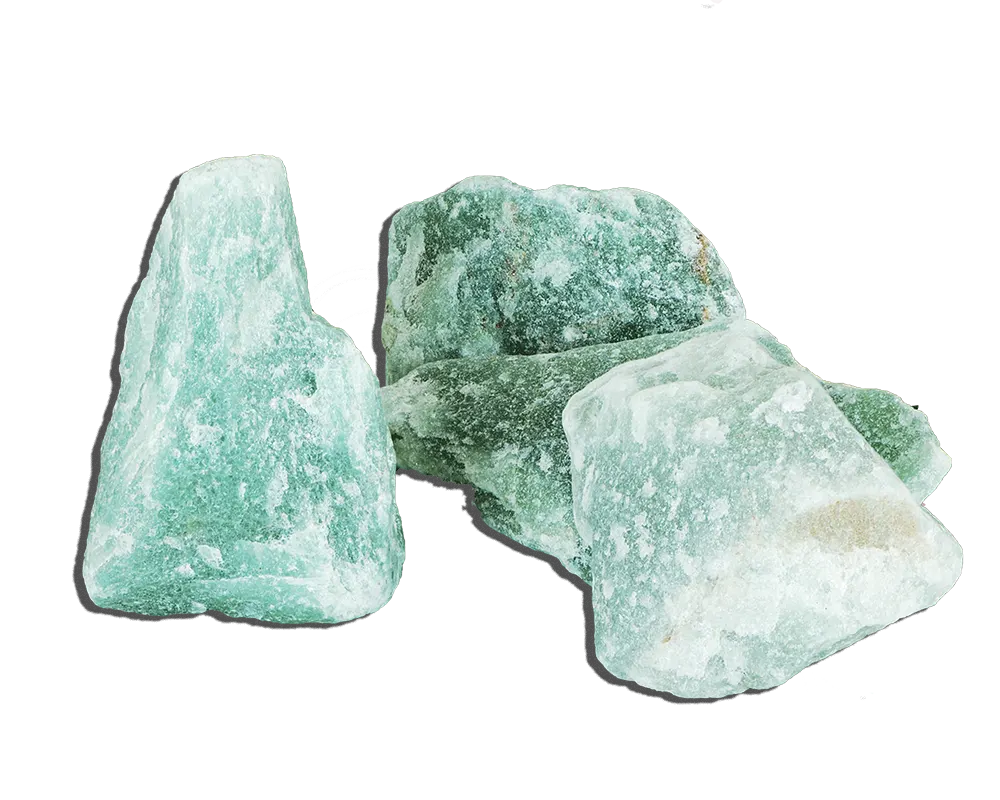
How can you tell if the Aventurine stone is Real or not?
Most people can tell if their gemstone is genuine by looking at its physical properties. For example, Aventurine stones mined in Brazil will look similar to those found in India but will not have the same properties. Brazilian Aventurine has a greater density than Indian Aventurine, which means it will feel heavier when you hold it in your hand.
- Color: Check the color for vibrancy and monotony. If it’s monotonous and lacks depth, it is likely fake. It is expected glass or a synthetic gemstone if it is too vibrant. Check the evenness of the color by holding your stone up to the light. Does it reflect light evenly? If not, there is something wrong with its composition, and you should pass on this gemstone.
- Acetone Test: Do an acetone test. Soak in acetone for a few minutes to see if the color comes off. If it does, then it’s likely fake.
- Transparency: Check transparency. Opaque stones are usually fake. Check for inclusions: Inclusions are natural flaws in the rock. If you look closely at your gemstone, you should be able to find them. They will be small and irregularly shaped. If there are none, then it is probably fake.
- Scratch Test: Do a scratch test. Kitchen knives shouldn’t leave a mark on hard stones with a rating of 6-7 or higher. Aventurine has a Mohs hardness of seven and does not have cleavage as a quartz variety.
You can also use a refractometer to determine if the Aventurine stone is natural or not. This tool uses light and a lens to measure the gemstone’s birefringence, which is its ability to bend light through different indexes of refraction. If you hold up a piece of Aventurine stone against this device, it should show two different colors when you view it from different angles.
Aventurine Chakra Connection
Which Chakra does the Aventurine stone symbolize?
Aventurine symbolizes the Heart chakra and can help to open it. It can also help to balance other chakras, including the Root Chakra, Solar Plexus Chakra, and Throat Chakra. Aventurine is a beautiful stone for those feeling lonely or depressed because it helps them find comfort in themselves.
Where is the Heart Chakra located?
The heart chakra, also known as Anahata, is situated in the middle of the chest. The rib cage, lungs, heart, circulation, skin, hands, arms, and upper back are all controlled by this Chakra. In addition, the heart Chakra governs love and reflects the beauty of our home planet.
What’s another name for the Heart Charka?
The heart chakra is also known as “Anahata.“
Aventurine Uses
- Aventurine is often used as a healing stone. It is said to reduce stress, anxiety, and headaches and help with insomnia and other sleep disorders.
- Aventurine stones can help with digestion by stimulating the appetite and improving metabolism. It is also thought to be beneficial for detoxification and overall health maintenance.
- It is an excellent crystal to use to enhance your aura’s energy. It is particularly well suited for those looking for improved relationships, love, and sexuality. Aventurine assists in balancing energies within the body and removing dis-ease and blockages.
- Aventurine stone is often used in jewelry because it can help to strengthen the wearer’s aura. It’s also been used in rituals to promote wealth and good luck.
- This stone is well-known for promoting balance, calming energy, and joy. It’s also a source of protection against negativity and unwanted energies.
- It can help you build self-confidence, which will help you feel more at ease and more stable in your life. This stone can also be used to boost your creativity and imagination, which will help you achieve your goals.
- This is the perfect stone if you want to approach life with calmness and kindness. Talismans made using this gem also protect against negative energy and vibrations from others, allowing them to bring peace into your life.
- The Aventurine crystal lends itself beautifully to any form of jewelry. It is used to make bracelets and earrings.
- Crystal healing practitioners use red Aventurine beads in pendants and necklaces to help patients with blood pressure and nervous system disorders and clear the thymus gland.
What does Aventurine Symbolize?
- Aventurine is a green stone often used to represent luck and prosperity. The stone is called “the luck of the Irish,” so if you’re looking for a gift for someone who’s Irish, Aventurine is a great choice.
- Aventurine symbolizes abundance, creativity, perseverance, harmony, healing, and love. It also represents springtime, rebirth, renewal, rejuvenation, and success.
- The color green in this stone represents nature’s bounty: fertility, life, and growth. Green can also symbolize youthfulness and inspiration, and it is known to increase the vitality of wearers.
- It’s also associated with creativity and balance, making it an excellent stone for artists, musicians, and anyone who wants to feel like they’re in control of their lives.
- Aventurine is a stone of abundance and prosperity. It helps to bring luck, wealth, and good fortune to its owner. It also helps to clear the mind and relieve stress. Aventurine is excellent for those looking for guidance in their lives, as it can help them find their life purpose.
- The Aventurine crystal is a stone of prosperity. This gem is used in meditation and to increase compassion between estranged friends.
Which Zodiac Symbol does Aventurine Symbolize?
Aventurine is associated with the Sagittarius sign. The element associated with Aventurine is Air, and it’s also a stone of Fire.
Which Birth Stone is associated with Aventurine Stone?
Aventurine is a birthstone for those born in March. What are the Health Benefits of Aventurine? Aventurine is said to help relieve stress and anxiety, improving sleep quality. It’s also helpful for those who suffer from insomnia or nightmares.
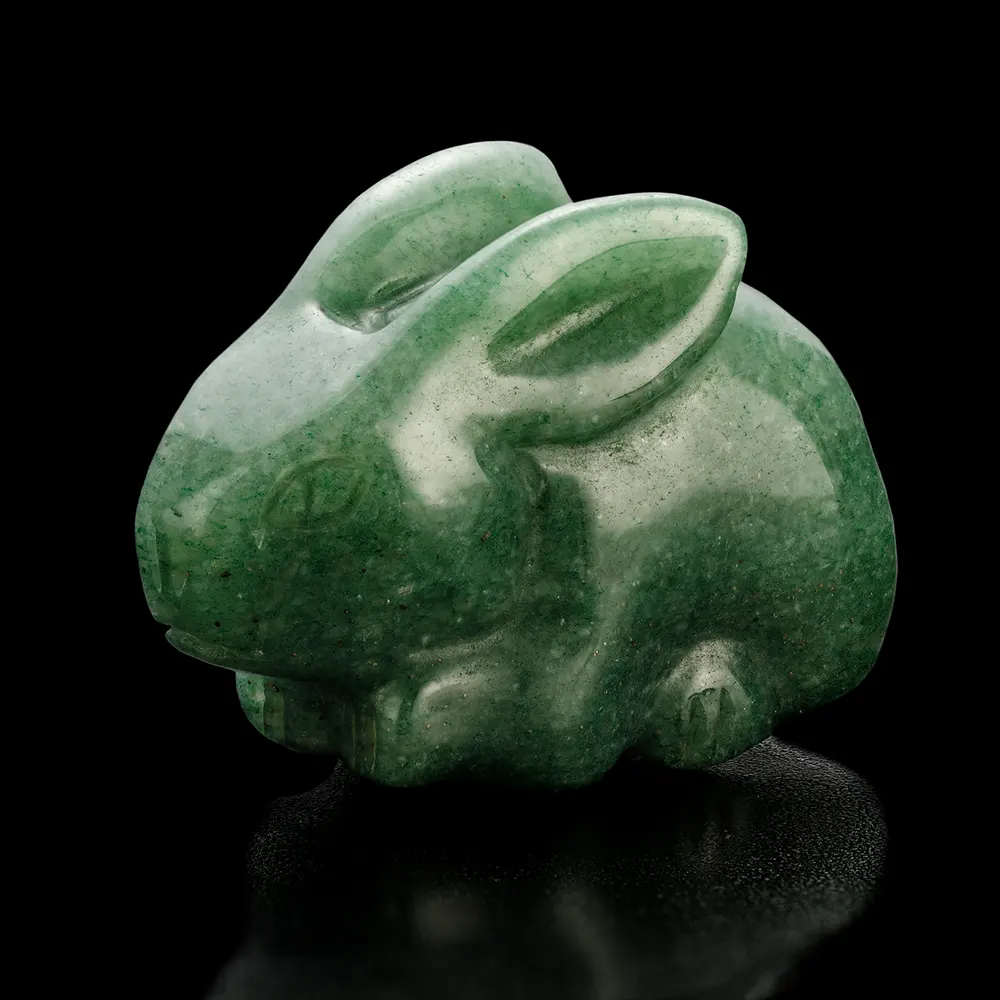
How to clean Aventurine Stone Jewelry?
The usual household cleaning method includes the following steps:
- Soak in lukewarm soapy water for around 15 – 30 minutes.
- Remove any remaining residues with a soft toothbrush.
- Wipe with a microfiber cloth until smooth and lustrous.
- Cleanse it using burning sage to remove any negativity absorbed.
- Recharge it using the moon’s light or by burying it underground.
Aventurine stone jewelry should be protected from household chemicals and extreme heat exposure, which may cause damage or alterations in coloration. Most ultrasonic cleaners and steamers are safe to use, but it’s recommended that you do so with caution. Aventurine jewelry is stored in a fabric-lined container separate from other jewelry pieces.
FAQ
How hard is an Aventurine Stone?
Aventurine has a Mohs hardness rating of around 7. A regular kitchen knife cannot scratch it..
What other crystals can be paired with Aventurine?
Aventurine is often paired with other green stones like Malachite, Green Jade, and Chrysoprase. It also pairs well with Citrine, Amethyst, and Clear Quartz.
How can Aventurine be charged?
Aventurine can be charged by placing it in the sun or moonlight. You can also set it near a salt lamp or Feng Shui water fountain.
Is Aventurine associated with any health risks?
No information on health risks for this material is currently known. However, it would be best if you always carefully treat mineral specimens.
Is Aventurine the same as Aventurine Glass?
Goldstone is an artificial gem whose appearance imitates the precious stone called Aventurine. Unlike most specimens of natural Aventurine, goldstone contains metal particles and has stronger pseudo-aventurescence than those that are purely glassy. The color of the base glass (clear or colored) gives these simulants their distinctive hues.
Is Aventurine a Quartz?
Aventurine is a form of quartz with glistening fragments (usual mica), which can be cut and polished as a gemstone.


